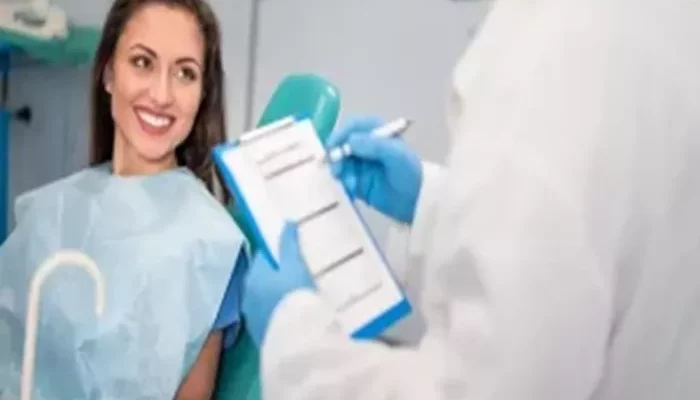In orthodontics, the choice of dental materials is crucial for the success of treatment. Among the various materials available, glass ionomer cements (GICs) have become a popular choice for many orthodontic applications. This article explores the reasons why glass ionomer cements are widely used in orthodontics, focusing on their properties, advantages, and specific applications.
Understanding Glass Ionomer Cements
What Are Glass Ionomer Cements?
Glass ionomer cements are dental materials made from a mixture of glass powder and an organic acid. When these components are combined, they form a paste that can be placed in the mouth. Once set, GICs bond chemically to both enamel and dentin. This unique property makes them suitable for various dental applications, including orthodontics.
Types of Glass Ionomer Cements
There are several types of glass ionomer cements, each designed for specific uses:
Conventional Glass Ionomer Cements: These are used for general restorative purposes and have good adhesion to tooth structures.
Resin-Modified Glass Ionomer Cements: These cements contain added resins, improving their mechanical properties and aesthetic appearance.
High-Viscosity Glass Ionomer Cements: These are thicker and provide additional strength, making them suitable for load-bearing applications.
1. Excellent Adhesion Properties
Chemical Bonding to Tooth Structure
One of the primary reasons glass ionomer cements are favored in orthodontics is their excellent adhesion to tooth structures. GICs bond chemically to the minerals in enamel and dentin. This chemical bond enhances retention and reduces the risk of debonding during orthodontic treatment.
Reduced Microleakage
The chemical bond formed by glass ionomer cements helps minimize microleakage. This is crucial in orthodontics, where brackets and bands must remain securely attached to the teeth throughout the treatment period. Reduced microleakage also helps prevent secondary caries, which can occur if bacteria penetrate the margins of restorations.
2. Fluoride Release
Anti-Cariogenic Properties
Glass ionomer cements are known for their ability to release fluoride ions over time. This property provides a significant advantage in orthodontics, where patients may be at increased risk for cavities due to changes in oral hygiene practices during treatment.
Remineralization: The fluoride released from GICs can help remineralize early carious lesions, strengthening the enamel and reducing the risk of decay.
Cavity Prevention: The continuous release of fluoride can provide ongoing protection against caries, making GICs an excellent choice for use in orthodontic patients.
3. Biocompatibility
Safe for Oral Tissues
Glass ionomer cements are highly biocompatible, meaning they are safe for use in the oral environment. They do not cause significant irritation to the surrounding tissues, which is essential in orthodontics, where materials are often in contact with gums and mucous membranes.
Minimal Allergic Reactions
Unlike some other dental materials, glass ionomer cements are less likely to cause allergic reactions. This characteristic is particularly important for patients with sensitivities to certain dental materials.
4. Ease of Use
Simple Application Process
Glass ionomer cements are easy to mix and apply, making them a convenient choice for orthodontists. The material can be placed directly onto the tooth surface and shaped as needed.
Quick Setting Time
GICs have a relatively quick setting time, allowing orthodontists to complete procedures efficiently. This is particularly beneficial in busy clinical settings where time management is essential.
5. Versatility in Orthodontic Applications
Bonding Brackets and Bands
One of the primary uses of glass ionomer cements in orthodontics is for bonding brackets and bands to teeth. Their strong adhesive properties ensure that brackets remain securely attached throughout treatment.
Temporary Cementation
GICs can also be used as temporary cements for various orthodontic appliances. Their ease of removal makes them suitable for situations where temporary bonding is necessary.
Space Maintainers
Glass ionomer cements are often used in the fabrication of space maintainers. These devices help maintain the position of teeth after premature loss of primary teeth. GICs provide the necessary strength and biocompatibility for these applications.
6. Aesthetic Considerations
Tooth-Colored Appearance
While glass ionomer cements are not as aesthetic as composite resins, they do offer a tooth-colored appearance. This can be beneficial in certain orthodontic applications, especially when aesthetics are a concern.
Acceptable for Anterior Teeth
In cases where aesthetics are important, such as bonding brackets on anterior teeth, glass ionomer cements can provide an acceptable solution without compromising the overall treatment.
7. Cost-Effectiveness
Affordable Option
Glass ionomer cements are generally more affordable than other dental materials, such as composite resins. This cost-effectiveness makes them an attractive option for orthodontic practices, especially when treating a large number of patients.
Long-Term Value
While the initial cost may be lower, the long-term benefits of using GICs—such as fluoride release and reduced risk of caries—can lead to overall savings in dental care.
8. Limitations of Glass Ionomer Cements
Lower Strength Compared to Other Materials
While glass ionomer cements have many advantages, they do have some limitations. Their strength is generally lower than that of resin composites or other materials. This means that, in high-stress areas, orthodontists may need to consider alternative materials.
Susceptibility to Moisture
Glass ionomer cements can be sensitive to moisture during the initial setting phase. Proper isolation of the tooth during application is essential to ensure optimal bonding and performance.
Conclusion
Glass ionomer cements are widely used in orthodontics due to their excellent adhesion properties, fluoride release, biocompatibility, ease of use, versatility, and cost-effectiveness. These characteristics make them a preferred choice for bonding brackets, temporary cementation, and fabricating space maintainers.
While GICs have some limitations, their benefits often outweigh any drawbacks, especially in the context of orthodontic treatment. As dental materials continue to evolve, glass ionomer cements will likely remain a staple in orthodontics, providing reliable and effective solutions for patients and practitioners alike.
Related topics:

